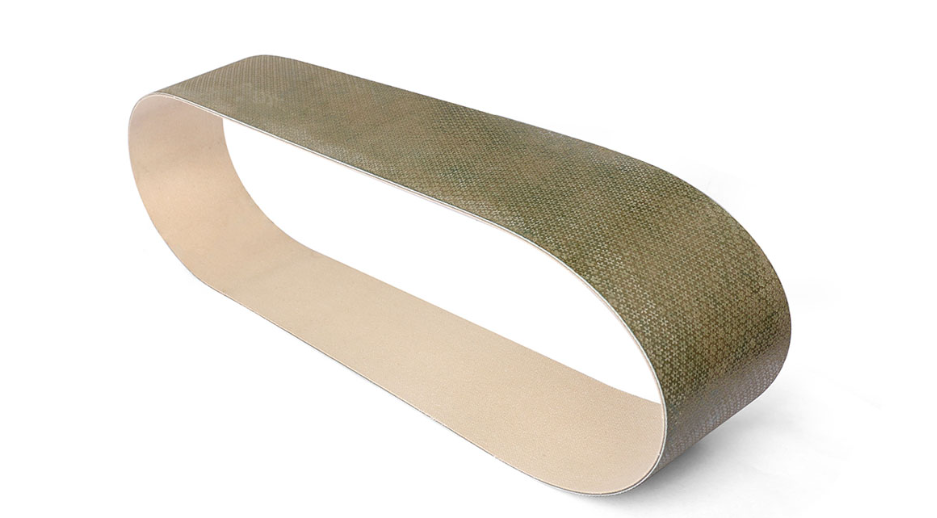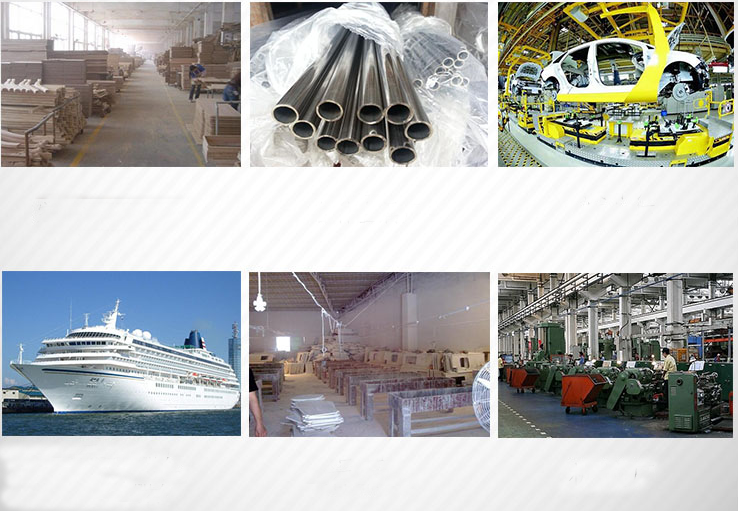The basic structural elements of the abrasive belts
The abrasive belt is generally composed of four basic elements, namely matrix, binder, abrasive and structural form. As shown in the table:
Substrate – cloth base, paper base, composite base
Abrasive – natural abrasive – natural corundum, pomegranate jade
Abrasive belt Ordinary abrasive – white corundum, brown corundum, zirconium corundum, silicon carbide
Superabrasives – synthetic diamond, cubic boron nitride
Binders – animal glue, semi-resin, all-resin, water-resistant products
Structural form – no joint abrasive belt
Joint belts – butt joints, lap joints, etc.
The scope of use of the abrasive belt
1. Plate processing industry: raw wood, plywood, fiberboard, particleboard, veneer, furniture, building materials and others;
2. Metal processing industry: non-ferrous metals, ferrous metals,;
3. Ceramics, leather, fiber, paint, plastic and rubber products, stone and other industries.
The choice of diamond sanding belts:
The correct and reasonable selection of the abrasive belt is not only to obtain good grinding efficiency, but also to consider the service life of the abrasive belt. The main basis for selecting the abrasive belt is the grinding conditions, such as the characteristics of the grinding workpiece, the state of the grinding machine, the performance and technical requirements of the workpiece, and the production efficiency; on the other hand, it must be selected from the characteristics of the abrasive belt.
1. Choice of granularity:
In general, the selection of abrasive grain size is based on consideration of grinding efficiency and workpiece surface finish. For different workpiece materials, the grain size range of the abrasive belts selected for rough grinding, intermediate grinding and fine grinding is shown in the table below.
2. The choice of binder: The abrasive belt can be divided into animal glue abrasive belt (commonly known as dry abrasive belt), semi-resin abrasive belt, full resin abrasive belt and water-resistant abrasive belt according to different adhesives. Its scope of application is as follows:
(1) The animal glue abrasive belt is cheap and easy to manufacture, and is mainly suitable for low-speed grinding.
(2) The semi-resin abrasive belt improves the shortcomings of animal rubber abrasive belts such as poor moisture resistance and poor heat resistance, and greatly improves the bonding performance. The grinding performance is multiplied under the condition that the price has not increased much. It is widely used in metal and non-metal grinding, especially in wood and leather processing industries.
(3) The all-resin abrasive belt is made of high-quality synthetic resin, high-strength cotton cloth and high-quality abrasives. The cost is high, but it has the characteristics of wear resistance and strong grinding. It is suitable for high-speed operation, large cutting, and high-precision grinding. The above three abrasive belts are suitable for dry grinding and can also be ground in oil, but they are not resistant to water.
(4) Compared with the above-mentioned abrasive belts, the water-resistant abrasive belt has higher requirements on raw materials and more complicated manufacturing processes, so the output is less and the price is relatively high. In addition to the characteristics of resin abrasive belts, it can also be directly used for water coolant grinding.
3. Matrix selection:
Name Characteristics Uses Applicable Scope Paper Single-layer light paper 65-100g/m2 Lightweight, soft, low tensile strength and low cost. Mostly used for fine or medium grinding, suitable for manual or vibrating sanders. Complex surface workpiece polishing, curved wood sanding, metal and wood finish polishing, precision instrument grinding, etc.
Multilayer medium paper 110-130g/m2 is thicker, more flexible, and has higher tensile strength than light paper. For manual or hand-held polishing machines, making sheets and rolls of sandpaper. Derusting and polishing of metal workpieces, sanding of wooden furniture, polishing of primer putty, machine polishing of lacquer surfaces, grinding of watch cases and instruments, etc. Multi-layer heavy-duty paper 160-230g/m2 High tensile strength, low elongation and high toughness.
Manufacture of paper abrasive belts for machining. Suitable for drum sanders, broadband sanders and general belt grinders, mainly processing plywood, particleboard, fiberboard, leather and wood.
cloth
Lightweight cloth (twill)
Very soft, light, and moderate tensile strength. Manual use or low-load machine use. Grinding, derusting, polishing and polishing of metal parts, plate processing of drum sanders, processing of sewing racks, light-duty abrasive belts.
Medium cloth (denim)
Good flexibility, thick and high tensile strength. Machine General machine abrasive belts, and heavy-duty abrasive belts, such as furniture, tools, electric irons, sand steel sheets, engine blade grinding, etc.
Heavy Duty Cloth (Satin) Thick, weft strength is higher than warp strength Machine, suitable for heavy duty grinding. For processing large-area panels.
composite base
Especially thick, high strength, anti-wrinkle, tensile and tear-resistant. machine. Heavy-duty abrasive belt, especially suitable for guillotine, fiberboard, plywood processing and inlaid floor grinding. Steel paper is particularly thick, with high strength, low elongation and good heat resistance. machine. Mainly used for sand pan, welding seam, rust removal, metal skin and oxide layer removal, etc.
4. Choice of abrasive:
——It is usually the workpiece material with high tensile strength, and the corundum abrasive with high toughness, high pressure bearing, strong crushing resistance, high temperature resistance and chemical stability is selected;
——For metal, non-metal and other workpieces with low tensile strength and high toughness, choose silicon carbide abrasives with high hardness, high brittleness and easy breakage, such as: glass, brass, leather, rubber, ceramics, jade, particleboard, fiberboard Wait.
5. Treatment of abrasive belt before use:
When the abrasive belt is used, the running direction should be consistent with the direction marked on the back of the abrasive belt, so as to prevent the abrasive belt from breaking during operation or affecting the surface quality of the workpiece in the processing plant. The abrasive belt should be turned for a few minutes before grinding, and then start grinding when the abrasive belt is running normally.
The abrasive belt should be hung before use. The unpacked abrasive belt should be hung on a pipe with a diameter of 100-250mm and let it hang for 2 to 3 days. The selection of the diameter of the pipe should be determined according to the size of the abrasive belt. When hanging, the joint should be at the upper end of the pipe, and the pipe should be in a horizontal state.
Post time: May-19-2022


